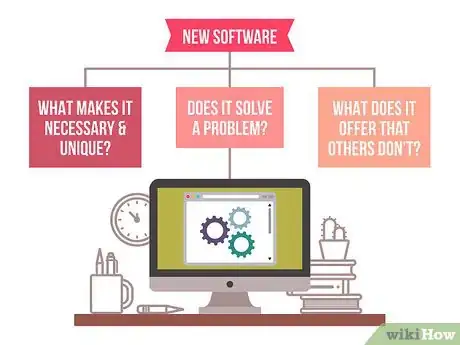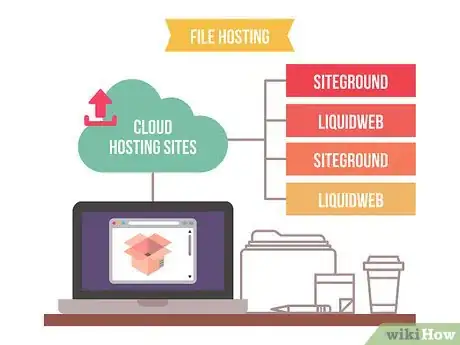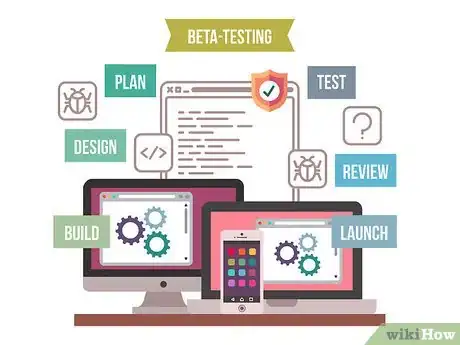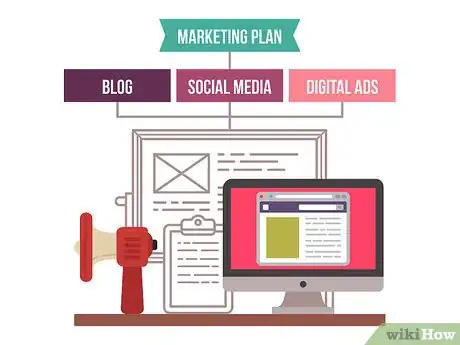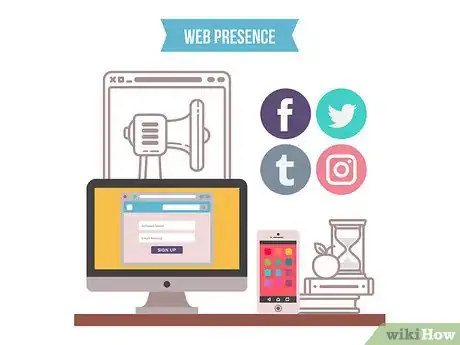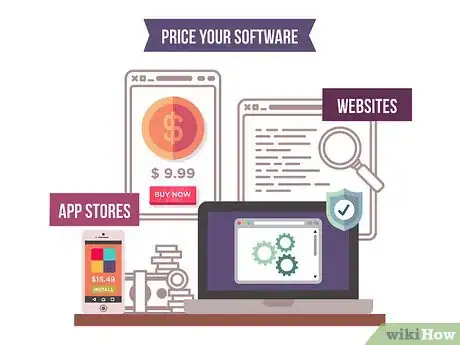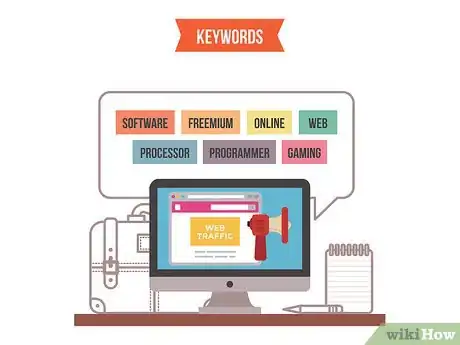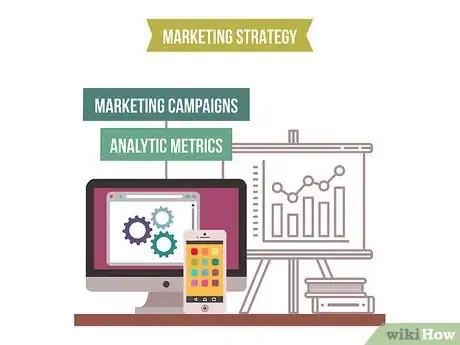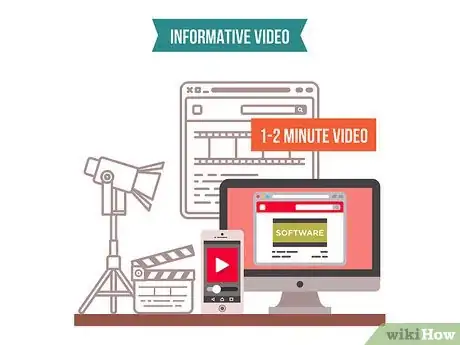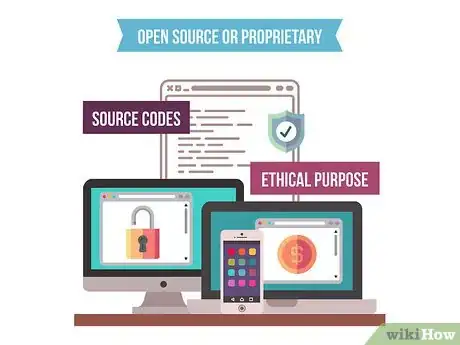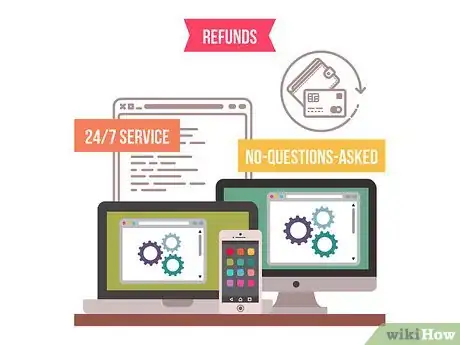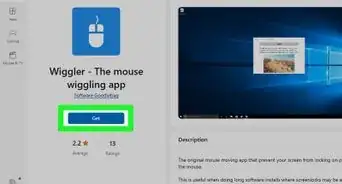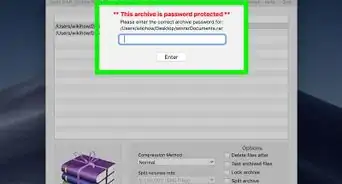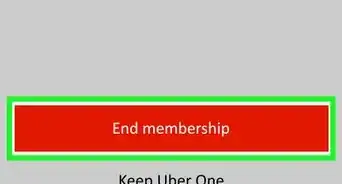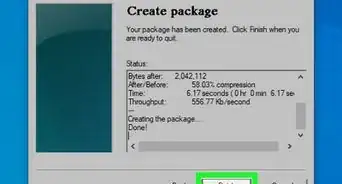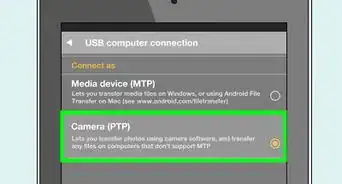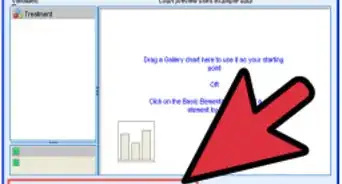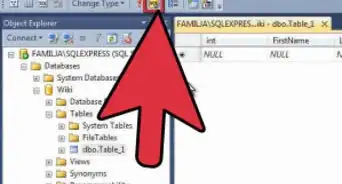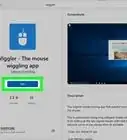This article was co-authored by wikiHow Staff. Our trained team of editors and researchers validate articles for accuracy and comprehensiveness. wikiHow's Content Management Team carefully monitors the work from our editorial staff to ensure that each article is backed by trusted research and meets our high quality standards.
wikiHow marks an article as reader-approved once it receives enough positive feedback. In this case, 100% of readers who voted found the article helpful, earning it our reader-approved status.
This article has been viewed 199,963 times.
Learn more...
Whether you’re selling software you’ve made yourself, a software product for a major corporation, or Software as a Service (Saas), you’ll need to follow a few basic principles in order to get your product into the hands of customers. Create a web presence and a marketing plan, and spread the word about your software package through blogs, forum posts, and online targeted advertising.
Steps
Readying Your Software for the Marketplace
-
1Define what makes your software worth buying. For new software to be competitively marketed and sold, it should solve a specific problem or fill a gap in the existing gamut of software. So, take a look at your product and figure out what makes it necessary and unique. This knowledge will help you market the software by focusing in on how it differs from or improves upon similar software or apps in the field.
- For example, say you're selling an RPG (Role Playing Game) for a smartphone. What does your RPG offer that others don't?
- Or, say you're selling a simple spreadsheet program without all the popular bells and whistles. Why should clients use your spreadsheet rather than any of the existing options?
-
2Figure out the audience that you’ll be selling your software to. Dialing in on a specific audience for your software will make the rest of the steps that much easier. Think about who your software will help out, what kind of people will use it, and how they’ll want to access or download the software.[1]
- For example, a gamer with a smartphone might like a mobile RPG. On the other hand, a small business owner who just wants to keep track of earnings might prefer a simple spreadsheet without all the bells and whistles that can bog down mainstream spreadsheet programs.
Advertisement -
3Host software files in the cloud to avoid taking up personal bandwidth. Hosting your software package in the cloud will allow you to avoid taking up too much personal bandwidth with large file sizes. You can also develop your software in the host website’s data center, and use the site to help deploy your finished software. Check out and compare a variety of different cloud hosting sites including:[2]
- SiteGround
- LiquidWeb
- HostGator
- LevelCloud
-
4Beta test your software before showing it to customers. Whether you’re building a simple budget-calculating app or a complex mapping software package, there are always going to be bugs in the code or problems with the user interface. Run through every element of the software before you upload it to your company’s website, and fix any problems before you start selling the software.[3]
- If you’re selling self-made software, send the beta to any programmer friends. Ask them to try it out and let you know if they find any problems.
Marketing Your Software
-
1Build a marketing plan that targets your intended audience. There are countless ways to market your software to clients. For example, consider which websites your intended audience frequents and request that the sites let you type up a guest post. Or, look through online forums dedicated to your type of software (e.g., mobile RPG games) and write a post or 2 describing your software in the forum.[4] Other ways to market software include:
- Building a blog and paying websites to link to your blog
- Advertising your software on social media sites
- Looking into digital advertising to create ads on websites other than social media pages
-
2Invite independent reviewers to use and review your software. Third-party reviews can be a great help in proving your software’s legitimacy and usefulness. Once you’ve had a few beta testers and/or early customers use your product, invite them to write up reviews. Then, once you’ve gotten about half a dozen positive reviews, post them on your social media sites or send them out in an email blast to website subscribers.[5]
- The third-party reviewers that you solicit should have no personal or professional connection with the software. For example, neither your personal friends nor employees of the company developing the software are independent reviewers.
-
3Create a social media and internet presence for your software. It’s likely that everyone who will use your software is online and has multiple social media accounts. So, make a Twitter, Facebook, and Instagram account for your software, and fill the pages with information describing the software and its uses.[6]
- Depending on the size of your company, you can mention the new software product on a company web page.
- Or, try posting the software on your personal Facebook and LinkedIn pages to spread the word and generate interest.
-
4Price your software competitively to undersell the competition. Look through app stores and software websites to find other software products similar to your own. Know how much competition is out there for your software and learn what the competition charges. For example, if your program is effectively a simplified version of another program, price your product so it’s cheaper than the more advanced option.[7]
- If there is no competition on your chosen platform, evaluate how much comparable software costs on any platform, if it exists.
-
5Create a freemium version of the software for customers to try. Freemium software packages allow users to access and use basic parts of the software for free for a limited time before the commit to buying the premium version of the software. Offering a freemium version of software is a great marketing strategy if you’re concerned that customers may be turned away by the software’s price tag, or if you want users to become familiar with your software before purchasing it.[8]
- Then, when your customers decide they want access to the full (“premium”) array of software features, they’ll be willing to pay full price.
-
6Write keywords in your website copy to bring in more web traffic. To bring in potential clients from online search engines, try filling your website text with keywords that will direct people to your site. The keywords should be specific to your software, but general enough that people who aren’t looking for your specific product will type them into search engines.[9]
- For example, in website copy, try using a few words like “freemium” and “software” as well as more specific terms that describe your software’s functions, like “RPG” or “budgeting spreadsheet.”
-
7Offer a free trial so users can familiarize themselves with your software. Skeptical—or curious—users may want to put your software through its paces before they commit to purchasing it. Set up a link on your website that allows users to download and use a trial version of the software for free for 30 days. Allowing customers to try your product for free will also show them that your software isn’t a scam or a rip-off.[10]
- Unlike freemium deals, a free trial allows users to access the full range of your software’s abilities. But, the trial version will expire unless users pay for the software.
-
8Adjust your marketing strategy after reviewing software sale metrics. Any good marketing strategy will evolve over time, and plans for selling software are no different. Analytic metrics will allow you to better understand where your customers come from online. Also try testing out different marketing campaigns to find out which work the best and bring in the most revenue. Then you can modify your overall marketing strategy based on which marketing campaigns are more or less effective.[11]
- For example, if you find out that 90% of people who purchase your software are redirected from your Twitter account, you’ll be able to focus more heavily on social-media advertising.
Selling and Supporting Your Product
-
1Create an online store to sell and support your software. Set up a website for your software. Make sure that the site has a “Shopping cart” tab so that customers can purchase and download your software. If you’re new to software sales and website development, you can start out using a free website platform like WordPress to host your site.[12]
- If you’re working for a large software company, the product will most likely be sold through a new page on an already-existing company website.
-
2Upload a 1–2 minute video describing the function of your software. Upload a friendly video that describes your software, its function, and the gap it fills among current software options. This will help potential customers feel informed and welcomed by your product. Or, if you feel that your software is pretty self-explanatory, upload a 2-minute long tutorial instead.[13]
- For example, say that you’ve designed a mobile-phone budget-tracking app. Make a friendly, informative video showing how to use the app, so that prospective clients won’t be put off or confused by potentially complex parts of the software.
-
3Decide whether to make your software open source or proprietary. Open source software can be accessed and shared for free by any of its users, since its source code is made available online.[14] Source code for proprietary software, on the other hand, has restricted access to prevent users from making similar software on their own. Most business owners who intend to make a profit off of their software keep it proprietary, so that users can’t generate their own versions of the software.
- Consider making the software open source, though, if you feel that it fulfills some ethical purpose that’s more important than turning a profit.
-
4Offer reliable customer service to support your software. Regardless of how user-friendly your software is, customers will come up with questions about the product. Offering friendly customer service will also build trust with your clients. If you work for a large company, offer 24/7 customer service and support for the software. If you’re a smaller operation, promise prompt customer service during business hours.[15]
- Help your customers feel as though their questions are valued by including a phone number on the “Contact Us” section of your website. This will feel more personal than just an email address.
-
5Promise a refund to any unsatisfied customers. Ideally, your software will work perfectly and no customers will request a refund because they aren’t satisfied with the software. But, offering a no-questions-asked, 100% refund to any dissatisfied customers will generate trust in your company. It’ll also motivate skeptical customers (who wouldn’t otherwise use your software) to try it out, since they have nothing to lose.[16]
- Feature a statement somewhere on the website like: “100% money back if you’re not satisfied with our product.”
Community Q&A
-
QuestionCan a software program be sold in detailed storyboard format, uncoded?
 Community AnswerIt depends on the buyer. A concept, of course, will not sell as much as the finished program. On the other hand, you must be vigilant when finding buyers. If you have no patent on the concept, it's not owned by anyone. Thus, anyone can make it without your permission.
Community AnswerIt depends on the buyer. A concept, of course, will not sell as much as the finished program. On the other hand, you must be vigilant when finding buyers. If you have no patent on the concept, it's not owned by anyone. Thus, anyone can make it without your permission. -
QuestionIf I have created an OS, how can I sell it?
 Community AnswerMake sure it's actually a competent system that people would use. If it is, then copyright it like any other software, and then make an installer and sell disks and ISOs/Product Keys.
Community AnswerMake sure it's actually a competent system that people would use. If it is, then copyright it like any other software, and then make an installer and sell disks and ISOs/Product Keys. -
QuestionHow do I sell my Windows application in an app store?
 Community AnswerTry quantum-key.net if your software is coded in a .Net language such as C# or VB.Net. It automates the licence key system and automatically creates a download/sales page on its website; it's free to use.
Community AnswerTry quantum-key.net if your software is coded in a .Net language such as C# or VB.Net. It automates the licence key system and automatically creates a download/sales page on its website; it's free to use.
Warnings
- Always read the Terms of Service for anything you use in connection with selling your software. That includes the rights taken by a blog that lets you guest post, and the details of your agreement with your shopping cart software.⧼thumbs_response⧽
- Some companies’ Terms of Service include clauses that take all rights to whatever you submit through them, making it illegal for you to switch what companies you use for that service, while letting the company resell your product without paying you.⧼thumbs_response⧽
References
- ↑ https://nementio.com/en/blog-inbound-marketing/how-to-sell-software-to-companies-10-steps/
- ↑ https://www.whoishostingthis.com/compare/saas/
- ↑ https://nementio.com/en/blog-inbound-marketing/how-to-sell-software-to-companies-10-steps/
- ↑ https://www.cio.com/article/286268/14-tips-for-selling-software-and-services-online.html
- ↑ https://www.cio.com/article/286268/14-tips-for-selling-software-and-services-online.html
- ↑ https://nementio.com/en/blog-inbound-marketing/how-to-sell-software-to-companies-10-steps/
- ↑ https://blog.close.io/how-to-sell-saas-9-tips-for-startup-sales-success
- ↑ https://www.cio.com/article/286268/14-tips-for-selling-software-and-services-online.html
- ↑ https://nementio.com/en/blog-inbound-marketing/how-to-sell-software-to-companies-10-steps/
- ↑ https://www.cio.com/article/286268/14-tips-for-selling-software-and-services-online.html
- ↑ https://www.cio.com/article/286268/14-tips-for-selling-software-and-services-online.html
- ↑ https://successfulsoftware.net/2013/03/19/the-brutal-truth-about-marketing-your-software-product/
- ↑ https://www.cio.com/article/286268/14-tips-for-selling-software-and-services-online.html
- ↑ https://opensource.org/faq
- ↑ https://www.cio.com/article/286268/14-tips-for-selling-software-and-services-online.html
- ↑ https://www.cio.com/article/286268/14-tips-for-selling-software-and-services-online.html
